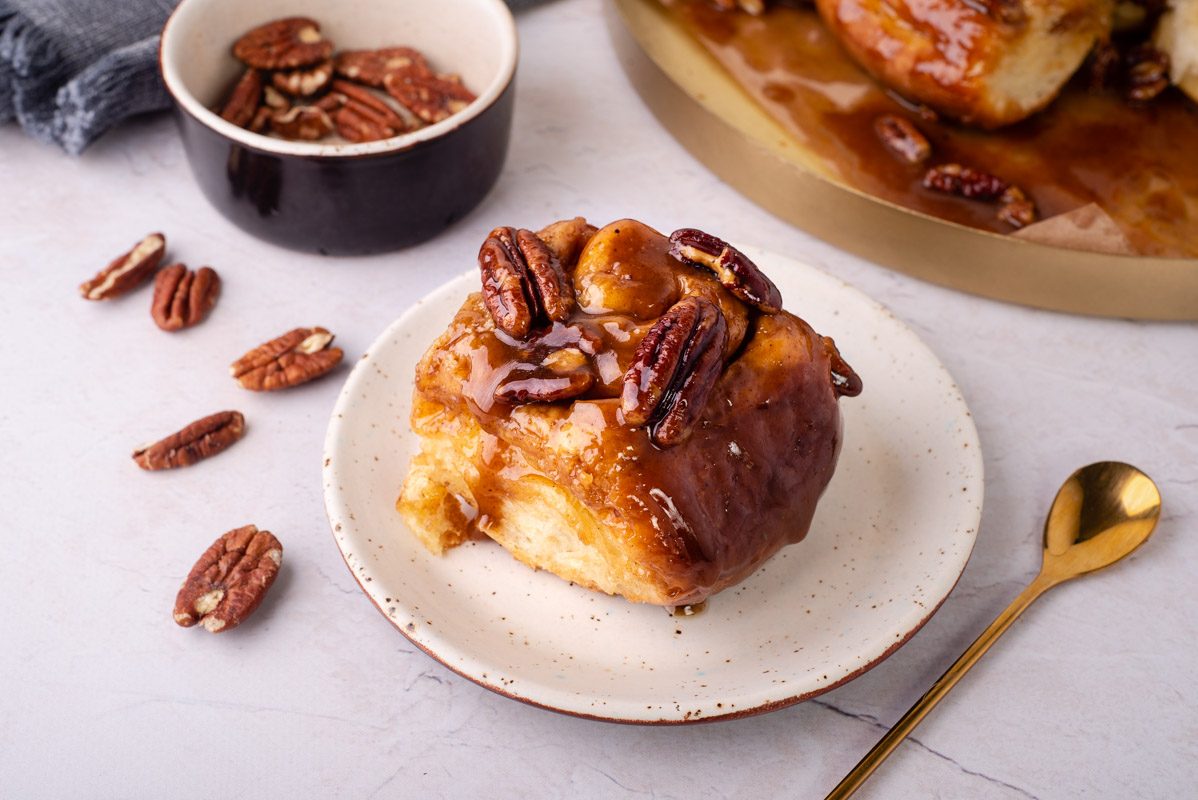Sticky Buns VS. Cinnamon Rolls: What Are the Differences?
Cinnamon rolls and sticky buns differ primarily in their toppings and preparation: cinnamon rolls are known for their simple cinnamon-sugar filling and cream cheese icing, while sticky buns feature a caramel and nut topping, baked in a way that the caramelized sauce ends up on top after inverting. Both originate from different historical backgrounds, with cinnamon rolls hailing from Scandinavia and sticky buns from the Pennsylvania Dutch in the USA, showcasing distinct flavors and textures.

Cinnamon rolls and sticky buns have firmly established themselves as beloved staples in the realm of breakfast and brunch menus worldwide. Their sweet, enticing aromas and mouth-watering appearances make them irresistible choices for many. Yet, despite their popularity, there's a surprising amount of confusion and curiosity about what exactly sets these two confections apart. Both have rich histories and distinct methods of preparation that differentiate them, not just in taste but also in tradition.
A Dive into Their Sweet Beginnings
Tracing their origins back to Scandinavia, cinnamon rolls, also known as ‘kanelbulle' in Sweden, have a history that spans several centuries. They became particularly celebrated in the United States and other parts of the world in the 20th century. Characterized by their signature swirl of cinnamon sugar wrapped in a tender, yeasted dough, cinnamon rolls are beloved for their simplicity and comfort. The traditional version is often topped with a cream cheese or simple sugar icing, adding a creamy sweetness that complements the spice of the cinnamon.
Sticky buns, on the other hand, have a more complex history with roots believed to stretch back to German settlers in Pennsylvania, USA, known as the Pennsylvania Dutch. These indulgent treats are similar to cinnamon rolls in their use of a yeasted dough but are taken a step further with the addition of a gooey caramel glaze and often pecans, poured over the top before baking. This results in a sticky, sweet topping that caramelizes and becomes wonderfully crunchy upon baking.

Crafting the Buns: A Tale of Two Doughs
The preparation of both pastries begins in a similar fashion—with a base of yeasted dough that is rolled out into a rectangle. This is where the similarities start to diverge, however. For cinnamon rolls, the dough is brushed with melted butter and then liberally sprinkled with a mixture of cinnamon and sugar. It's then rolled into a log, sliced into individual pieces, and baked until golden and fluffy. The final touch is a generous drizzle of icing, which seeps into the spirals of dough and spice.
Sticky buns take a detour in the addition of a caramel-like mixture, often including brown sugar, butter, and honey or corn syrup, spread in the bottom of the pan before the slices of dough are placed on top. This upside-down baking method means that when the buns are inverted after baking, the bottom becomes the top, coated in a rich, sticky sauce. Pecans or other nuts are frequently added to the caramel mixture, offering a crunchy contrast to the soft bun.

Similarities and Distinctions
While both pastries share the foundational element of a yeasted dough and a love for cinnamon, their differences lie in the topping and presentation. Cinnamon rolls are celebrated for their soft, spiraled dough and sweet icing, making them a comforting, straightforward treat. Sticky buns, by contrast, offer a more decadent experience with their caramelized topping and nutty texture, making each bite a complex blend of flavors and consistency.
;Resize,width=767;)


;Resize,width=712;)
